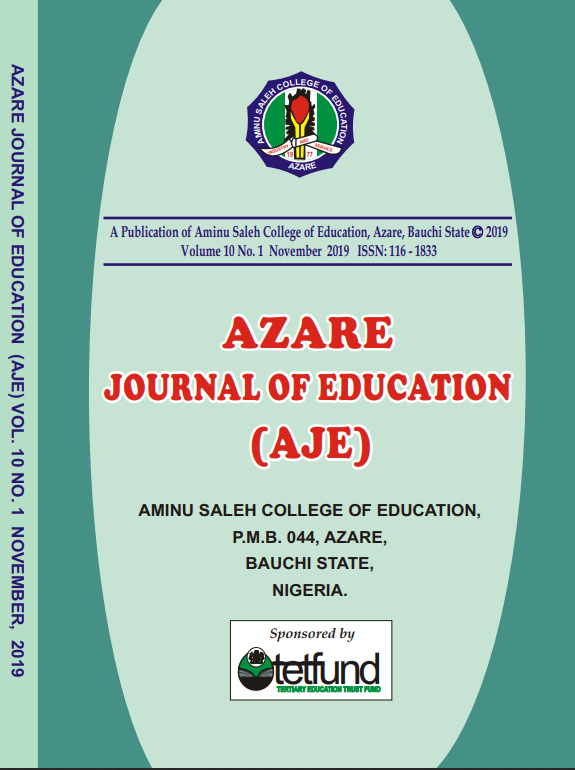Statistical Analysis of Out of School Children (OOSC) of Three to Eleven Years in Yamaltu and Balanga Local Governments Areas in Gombe State, Nigeria
DOI:
https://doi.org/10.1833/aje.v10i1.8Keywords:
Out-of-school, children at 3-5, access to schoolAbstract
The study is designed to establish baseline data of out of school children (OOSC) in twenty primary schools' catchment communities in Balanga, and Yamaltu Deba Local Government Areas of Gombe State. The study was carried out on school aged children according to 3-5 years pre-primary and 6-11 years primary school groups, in the two local government areas. Twenty (20) primary schools` catchment communities were targeted in the LGAs. Data were sourced directly from the households in the target communities by the researcher. The data was collected through a complete enumeration of the households in the target population using a designed questionnaire. Each household head within the catchment communities was interviewed and the results recorded on the form. The retrieved questionnaires were coded and entered into the pre-designed database in EXCEL for analysis and storage. The study identified a total of 6008 children of aged 3-11 among which 3338 are males, 2670 are females, being out-of-school in 20 target communities in the two local government areas in Gombe State. The study recommended that State Universal Basic Education Board (SUBEB) and Local Government Education Authority (LGEA) should establish Early Child Care and Development (ECCDE)Centres in the focus communities. Adequate facility should be provided to the affected catchment communities to accommodate children aged 3-5. And also to encourage and institutionalize community driven enrolment campaigns to attract both new and drop-out children back to school. To sustain retention and completion of children in focus schools, the stake holders should also galvanize efforts to make the learning environment child-friendly.







